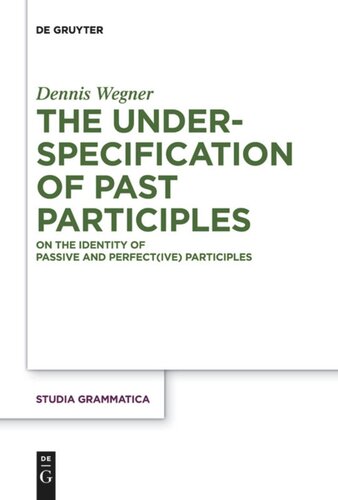

Most ebook files are in PDF format, so you can easily read them using various software such as Foxit Reader or directly on the Google Chrome browser.
Some ebook files are released by publishers in other formats such as .awz, .mobi, .epub, .fb2, etc. You may need to install specific software to read these formats on mobile/PC, such as Calibre.
Please read the tutorial at this link: https://ebookbell.com/faq
We offer FREE conversion to the popular formats you request; however, this may take some time. Therefore, right after payment, please email us, and we will try to provide the service as quickly as possible.
For some exceptional file formats or broken links (if any), please refrain from opening any disputes. Instead, email us first, and we will try to assist within a maximum of 6 hours.
EbookBell Team

4.8
94 reviewsAre the past participial forms that occur in passive and perfect periphrases substantially identical or should they rather be distinguished into accidentally homophonous passive and perfect(ive) participles? This book discusses the long-standing mystery of past participial (non-)identity on the basis of a broad range of synchronic data from Germanic and Romance, eventually focussing on German and English as these draw the most relevant distinctions (e.g. auxiliary alternation, a passive auxiliary that is not BE). Together with some contrastive insights from Slavic as well as the diachrony of passive and perfect periphrases, this clearly points to an identity-view. The novel approach that is laid out suggests that past participles conflate diathetic and aspectual properties. The former cause the suppression of an external argument, whereas the latter impose event-structure sensitive perfectivity, which only induces the completion of a situation if the underlying eventuality denotes a simple change of state. An approach along these lines sheds light on the intricate properties of past participles and the auxiliaries they occur with, the determinants of auxiliary selection as well as the interplay of argument and event structure.